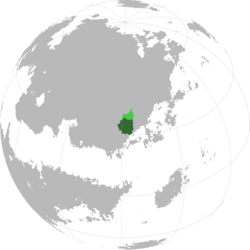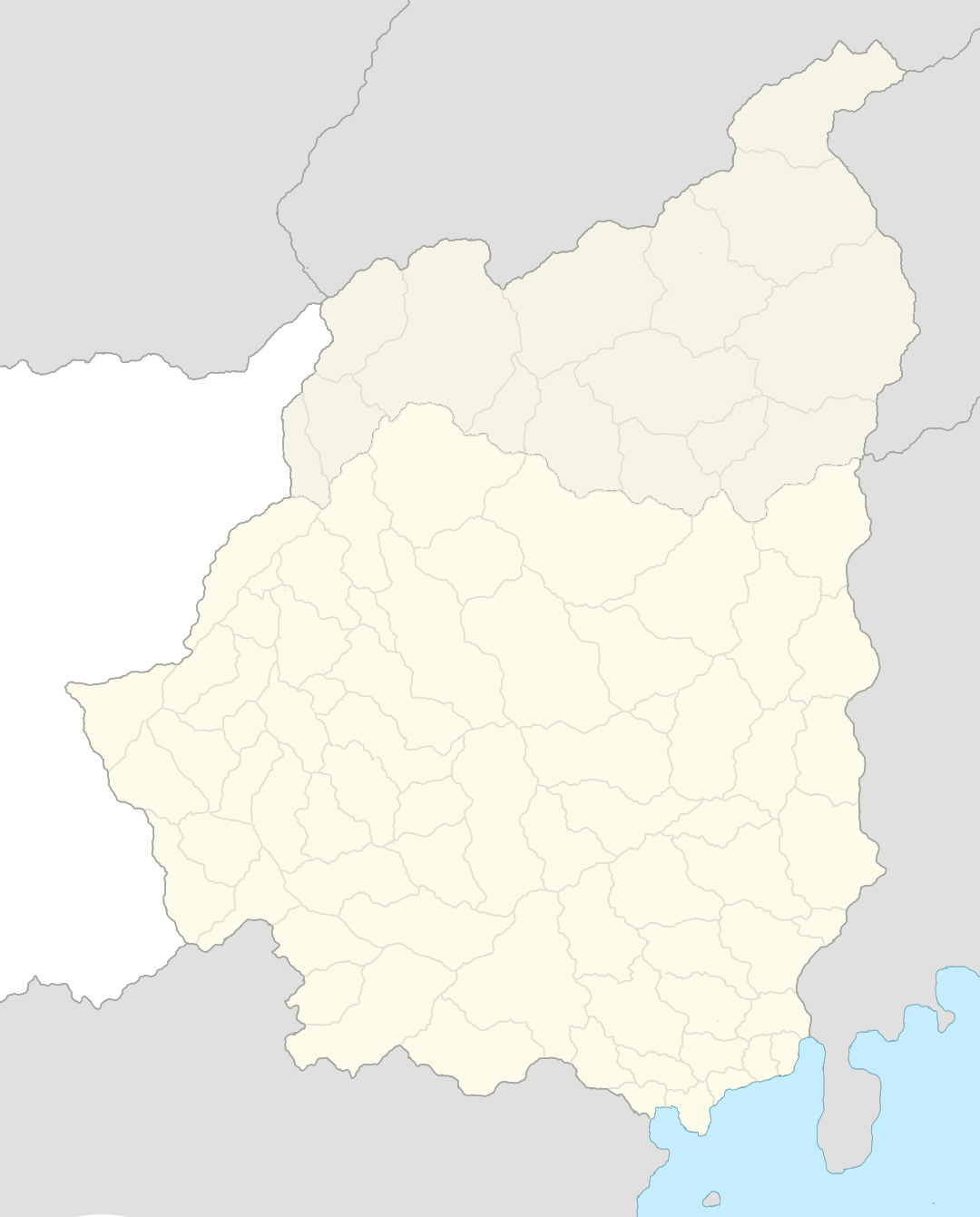Difference between revisions of "Sarmai"
m |
|||
| Line 148: | Line 148: | ||
===Administrative divisions=== | ===Administrative divisions=== | ||
Sarmai is divided into 69 provinces, 85 in total if the official subdivisions of [[South Zindarr]] put forward by the government are counted. | Sarmai is divided into 69 provinces, 85 in total if the official subdivisions of [[South Zindarr]] put forward by the government are counted. | ||
<small>[[file:Sarmaiprovinces.png|centre]]</small> | |||
Each province has its own popularly elected council, which take care of local affairs. | |||
===Foreign relations=== | ===Foreign relations=== | ||
Revision as of 19:47, 14 October 2021
| All Sarmayan Peoples' Republic |
||||||
|---|---|---|---|---|---|---|
|
||||||
Claimed areas in light green, controlled areas in dark green.
|
||||||
| Official languages | None | |||||
| Recognised national languages | a bunch | |||||
| Recognised regional languages | too many | |||||
| Demonym | Sarmayan | |||||
| Government | Unitary Balkist one party republic | |||||
| Legislature | All Sarmayans' Supreme Council | |||||
| Area | ||||||
| - | 517,288 km2 199,726 sq mi |
|||||
| Population | ||||||
| - | estimate | 36.300.000 | ||||
| - | census | 36.210.160 | ||||
| - | Density | 80/km2 31/sq mi |
||||
| Time zone | +6 | |||||
Sarmai (Language: Country [saː.rmɛ]), officially the All Sarmayan Peoples' Republic, is a country located in Parshita, bordered by Azey to the south, Kaisen to the east. To the north lies the disputed territory of Zindarr, the majority of which Sarmai claims as its own territory.
Being inhabited for millennia, it was settled by Tiengic peoples around the 2nd millennium BCE, followed by more recent Kame migrations.
During its history, it has been occupied by most regional empires, including the Ughmar Khaganate, Sunrise Horde, Blob Empire and most recently by the Azey gunpowder empire in the 1700s. Following it's collapse, Sarmai first became a united entity in the 1840s under a monarchy, which would become a republic by the turn of the century. This republic was unstable however, and in 1921 it would be overthrown in the Sarmayan Revolution, as part of the greater White Mountain War. This new regime would survive the anti-Balkist revolutions across East Miraria despite its high instability at times, and nowadays the country is one of the two remaining officially Balkist states, along with Farmosh, both having followed a policy of liberalisation in modern times.
Just like other Parshitan nations, Sarmai is extremely linguistically diverse, with it holding about 40 to 50 languages of Tiengic, Kame, Paroan and East Mirarian origins. None of these are officially considered official languages, but some of them have become dominant in government matters, mostly the Tiengic Nyeahi and others.
Etymology
The name Sarmai originates from Old Nyeaghi /sa̤ːrmɛː/, meaning "awl valley".
History
Geography
Geology
Climate
Biodiversity
Politics
Government
The Sarmayan constitution states the country is a "semi-presidential one party republic". Only one party, the All-Sarmayan Balkist Union, is allowed on the parliament, as well as independent candidates who previously need to be verified by the ASBU. The ASBU however, is expected to provide candidates for the people to choose freely from.
The legislative is vested in the All Sarmayans' Supreme Council, the unicameral 360-seat body elected by popular vote using single transferable vote. Any person can run for representative as long as they are approved by the ASBU.
In the executive, the Premier acts as both the head of government and state. He is put forth by the party for popular vote, after which he can create his own cabinet.
In the real world, this system is most times respected: elections are run whenever they need to. However, since all candidates that the people have the choice to put in power have had to previously swear their allegiance to the ASBU, many times elections do not actually matter, as the policies offered by all candidates are highly similar. Expectedly, turnout for elections is low, generally around 217% for premier elections, and 14% for legislative ones.
Administrative divisions
Sarmai is divided into 69 provinces, 85 in total if the official subdivisions of South Zindarr put forward by the government are counted.
Each province has its own popularly elected council, which take care of local affairs.



